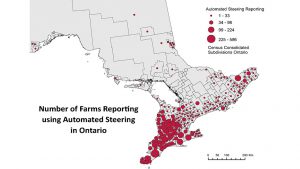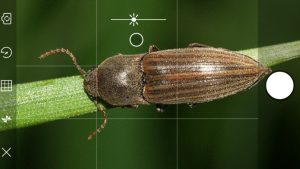A toxic issue
FROM THE CEO'S DESK

DON, ONE TYPE of Vomitoxin in corn, seems to be one of those lingering problems that, despite our best efforts, we can’t find a solution for.
It’s been another challenging year for grain farmers in Ontario — weather once again put the crop in jeopardy. After drought in July, some parts of the province saw timely rains that produced a good quality corn crop. But in other areas — particularly in the southwest — rain and humidity through the latter half of the summer were ideal for the development of ear moulds (such as Gibberella ear rot). This led to higher levels of DON in corn being detected throughout harvest.
Farmers who have struggled with selling their infected crop this fall and in previous years likely have the same question I do — why can’t we solve this issue? We have seen tremendous success in other agronomic areas, leading to benefits such as yield increases and reduced input costs, yet it seems we can’t do anything about this DON issue.
Truth is — we are doing what we can. Grain Farmers of Ontario has invested and continues to invest in research projects that are focused on developing integrated disease and pest management strategies to reduce the potential for mould infections to occur. The challenge with this, according to researchers, is variability. There is not only variability from region to region (as we’ve clearly seen) but also variability from field to field in the same area and even within a single field. Planting dates, pollination timing, the use of a fungicide, and pest pressures, all play a role.
Even when farmers implement all of the best management practices they can, it isn’t always enough. That’s why we need to pay more attention to the seed variety we are choosing to plant in our fields.
Buying seed is expensive — and like any large investment we need to do our research to make sure we choose the best fit for our needs. The yield potential of the seed can’t be realized if you know you will face specific diseases that your hybrid isn’t resistant to. When you are making your seed selections for planting in 2019, make sure you talk to your seed sales representative or your crop advisor about Gibberella ear rot ratings, rely on your past experience with a specific hybrid, and make sure you have as much information as you can about the seed you are planting. Given the challenge of selling high DON corn, a little extra time invested in seed selection can be well worth it.
ALTERNATIVE MARKETS
In addition to our research funding, Grain Farmers of Ontario is also investigating if there could be a broader market for corn with higher levels of DON. However, there are regulations in place from both Health Canada and the Canadian Food Inspection Agency (CFIA) indicating the maximum amounts of any vomitoxins that are allowed in both food and feed products.
An added frustration for producers has been the variability of test results indicating the amount of DON in a shipment of corn. It is not clear if this is a sampling issue or a problem with accuracy of the testing method itself. However, we will pursue how the industry can improve on the test results and achieve greater consistency.
While blending options are available, it is all dependent on the quality of grain available in that given year. This year, the challenge for end users was the very high levels that were seen in some regions early in the harvest. They had a hard time blending the DON levels down due to the limited availability of higher quality corn.
Ethanol may appear to be a market for higher DON corn, however, a main part of their business is dried distillers’ grains (DDGs). DON becomes concentrated in the DDG’s and the levels that are present increase. As DDG’s are a critical part of their overall business model, ethanol plants must place maximum levels on DON to ensure they can meet the regulated levels put in place by CFIA for DDGs.
While there are no quick solutions, we will continue to do what we can to address this issue. I encourage farmers to do their own part as well. For additional information and tips on how to handle DON in corn, refer to the fact sheet on page 25 of this magazine.
I look forward to seeing everyone at the January District Meetings next month. We will be talking about this issue as well as others impacting the grain industry and we will provide an overview of the work we have been doing on your behalf this year. These meetings are an important way for us to connect with our farmer-members and hear from you first-hand, so I encourage you to attend. •


























